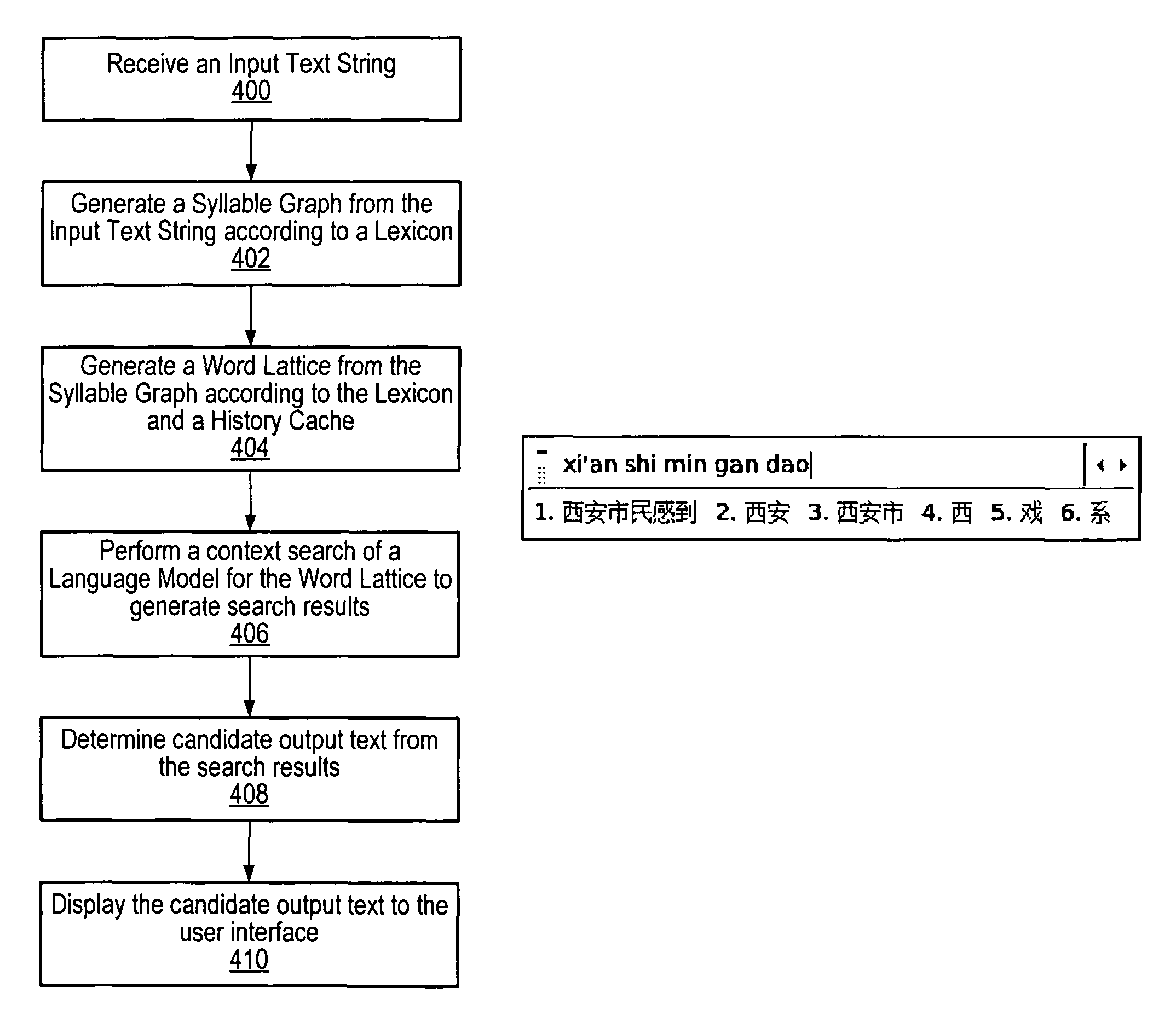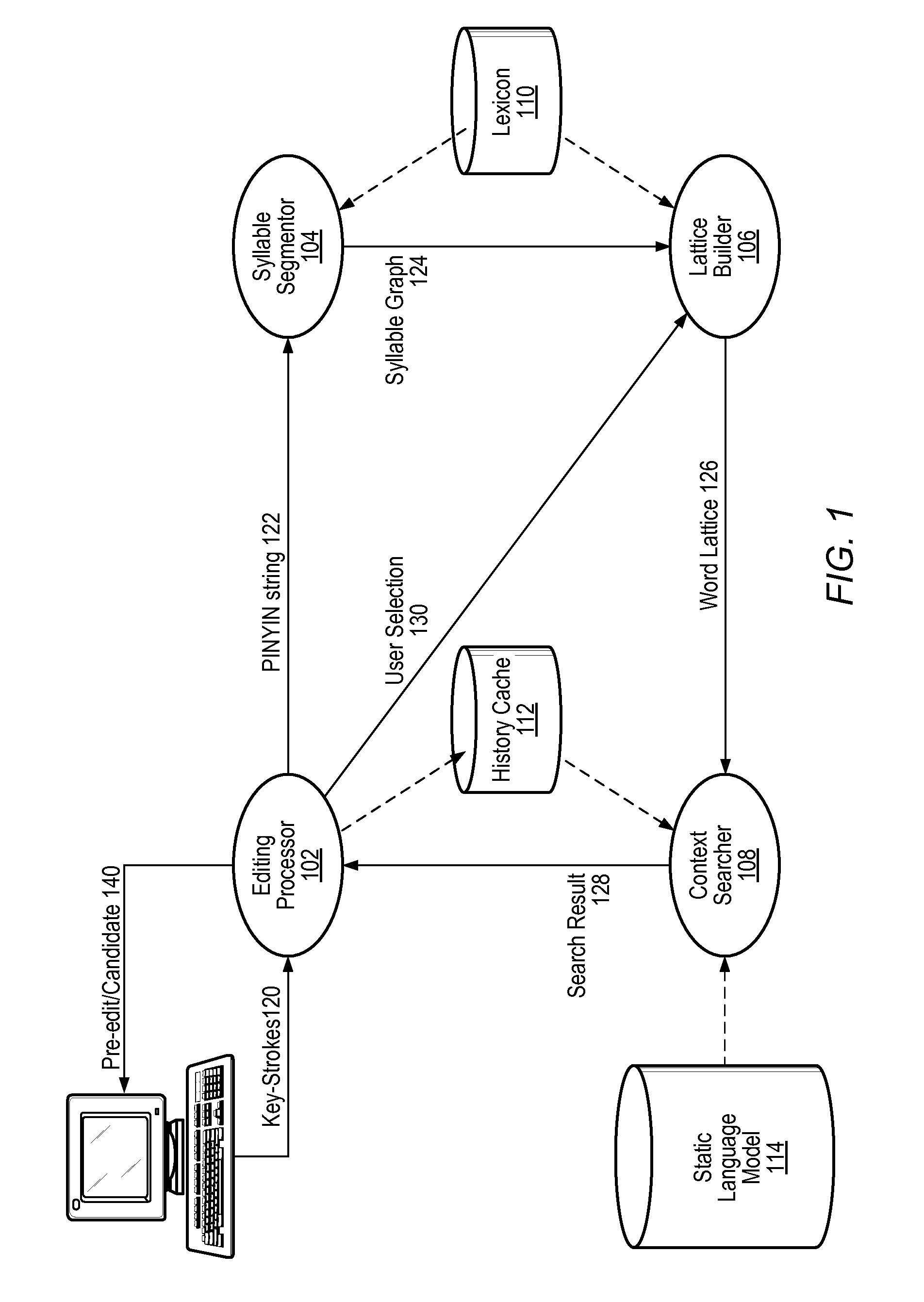Method and apparatus for converting phonetic language input to written language output
a phonetic language and input technology, applied in the field of computer systems, can solve the problems of low conversion precision and more effort by users to locate, and achieve the effect of reducing or minimizing the number of user interactions and high conversion precision
- Summary
- Abstract
- Description
- Claims
- Application Information
AI Technical Summary
Benefits of technology
Problems solved by technology
Method used
Image
Examples
Embodiment Construction
[0024]Embodiments of a method and apparatus for converting language text input into a different language text output are described. Embodiments may, for example, be configured to convert phonetic language text input using one symbol set or alphabet to phonetically represent a spoken language into written language text output that may represent the spoken language in a symbol set or alphabet common to the written form of that spoken language. More specifically, some embodiments may be configured to convert phonetic Pinyin text input, such as HànyûPinyin, into written Chinese language text output. Pinyin is a written text that uses the twenty-six alphabetic characters of the Roman alphabet, and possibly other symbols such as punctuation and accent marks, to phonetically represent a spoken Chinese language, such as Mandarin Chinese, which is historically written using a Chinese symbol set, or alphabet.
[0025]Embodiments may provide a computer-implemented language input mechanism that ac...
PUM
 Login to View More
Login to View More Abstract
Description
Claims
Application Information
 Login to View More
Login to View More - R&D
- Intellectual Property
- Life Sciences
- Materials
- Tech Scout
- Unparalleled Data Quality
- Higher Quality Content
- 60% Fewer Hallucinations
Browse by: Latest US Patents, China's latest patents, Technical Efficacy Thesaurus, Application Domain, Technology Topic, Popular Technical Reports.
© 2025 PatSnap. All rights reserved.Legal|Privacy policy|Modern Slavery Act Transparency Statement|Sitemap|About US| Contact US: help@patsnap.com



